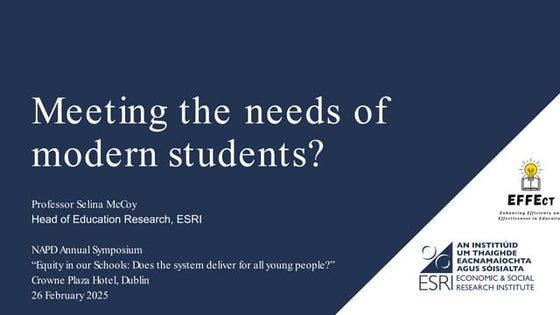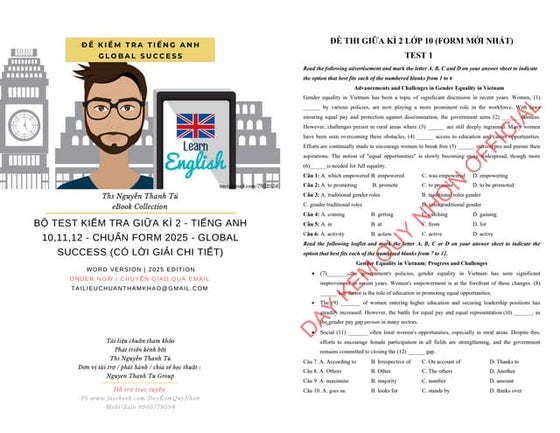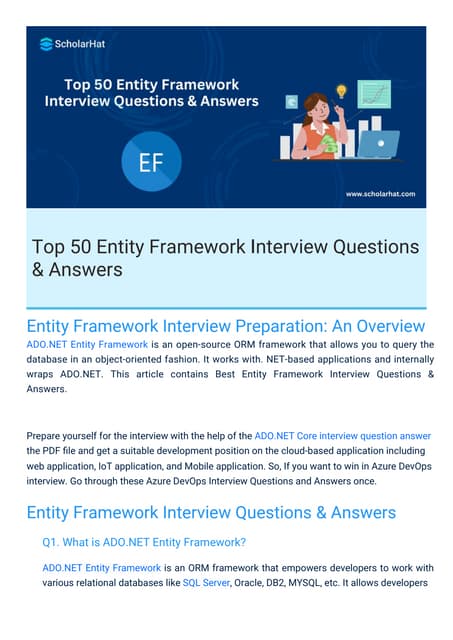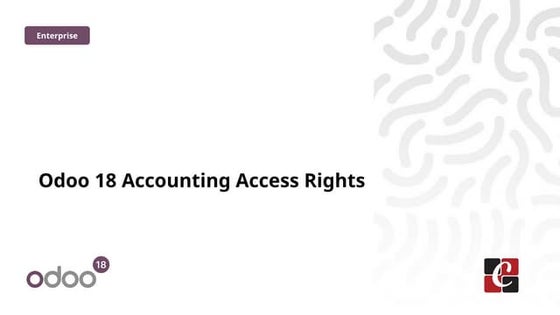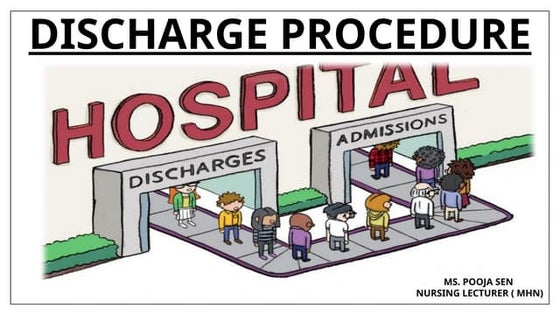BMH 07102 DS 8101 - Topic 2 Poverty.pptx
- 2. Meaning of Poverty ’é¦ Poverty is a multidimensional concept that can be viewed in terms of income and non-income dimensions. ’é¦ Non-income poverty ’ā╝ Lack of access to basic needs & social services, e.g. food, health, safe water, shelter etc. ’ā╝ Lack of personal justice & freedom, empowerment to participate in the political process & in decisions ’ā╝ Poor relations ’é¦ Income poverty ’ā╝ Involves lack of savings ’ā╝ Predominantly rural 11/19/2024 2 Gallen P. Mlenge MUST-RUKWA
- 3. Meaning of Poverty ’é¦ Generally, poverty can be viewed as deprivations that keep an individual from leading the kind of life that everyone values (decent life). ’é¦ This manifests in: ’ā╝Lack of adequate food and shelter, education, health services and clothing; ’ā╝Vulnerability to ill health, economic crisis/ shocks, natural disasters etc. 11/19/2024 3 Gallen P. Mlenge MUST-RUKWA
- 4. Meaning of Poverty ’é¦ It is an economic state where people are experiencing scarcity or the lack of certain commodities that are required for the lives of human beings like money and material things. ’é¦ Therefore, poverty is a multifaceted concept inclusive of social, economic and political elements. 11/19/2024 4 Gallen P. Mlenge MUST-RUKWA
- 5. Classification of Poverty ’é¦ It is complex to define poverty. Because it is depend on multifaceted and multidimensional elements like region, era, geographical condition, circumstances and many more. ’é¦ On the basis of social, economical and political aspects, there are different ways to identify the type of Poverty: 11/19/2024 5 Gallen P. Mlenge MUST-RUKWA
- 6. Classification of Poverty ’é¦ Absolute Poverty Vs Relative Poverty ’é¦ Situational Poverty Vs Generational Poverty ’é¦ Rural Poverty Vs Urban Poverty 11/19/2024 6 Gallen P. Mlenge MUST-RUKWA
- 7. Classification of Poverty ’é¦ Absolute Poverty: Also known as extreme poverty or abject poverty, it involves the scarcity of basic food, clean water, health, shelter, education and information. Those who belong to absolute poverty tend to struggle to live and experience a lot of child deaths from preventable diseases like malaria, cholera and water-contamination related diseases. Absolute Poverty is usually uncommon in developed countries. 11/19/2024 7 Gallen P. Mlenge MUST-RUKWA
- 8. Classification of Poverty "It is a condition so limited by malnutrition, illiteracy, disease, squalid surroundings, high infant mortality, and low life expectancy as to be beneath any reasonable definition of human decency." Said by Robert McNamara, the former president of the World Bank 11/19/2024 8 Gallen P. Mlenge MUST-RUKWA
- 9. Classification of Poverty 11/19/2024 9 Gallen P. Mlenge MUST-RUKWA
- 10. Classification of Poverty 11/19/2024 10 Gallen P. Mlenge MUST-RUKWA
- 11. Classification of Poverty ’é¦ Relative Poverty: It is defined from the social perspective that is living standard compared to the economic standards of population living in surroundings. Hence it is a measure of income inequality. For example, a family can be considered poor if it cannot afford vacations, or cannot buy presents for children at Christmas, or cannot send its young to the university. 11/19/2024 11 Gallen P. Mlenge MUST-RUKWA
- 12. Classification of Poverty ’é¦ A condition in which basic needs might be met but where there is an inability to meet perceived needs and desires in addition to basic needs. ’é¦ It takes into account the welfare distribution of the whole society/living standards of the broader community. ’é¦ Usually, relative poverty is measured as the percentage of the population with income less than some fixed proportion of median income. 11/19/2024 12 Gallen P. Mlenge MUST-RUKWA
- 13. Classification of Poverty 11/19/2024 13 Gallen P. Mlenge MUST-RUKWA
- 14. Classification of Poverty ’é¦ Situational Poverty: It is a temporary type of poverty based on occurrence of an adverse event like environmental disaster, job loss and severe health problems. People can help themselves even with a small assistance, as the poverty comes because of unfortunate event. 11/19/2024 14 Gallen P. Mlenge MUST-RUKWA
- 15. Classification of Poverty ’é¦ Generational Poverty: It is handed over to individual and families from one generation to the one. This is more complicated as there is no escape because the people are trapped in its cause and unable to access the tools required to get out of it. ŌĆ£Occurs in families where at least two generations have been born into poverty. Families living in this type of poverty are not equipped with the tools to move out of their situationŌĆØ (Jensen, 2009). 11/19/2024 15 Gallen P. Mlenge MUST-RUKWA
- 16. Classification of Poverty ’é¦ Rural Poverty: It occurs in rural areas with population below 50,000. It is the area where there are less job opportunities, less access to services, less support for disabilities and quality education opportunities. People are tending to live mostly on the farming and other menial work available to the surroundings. 11/19/2024 16 Gallen P. Mlenge MUST-RUKWA
- 17. Classification of Poverty 11/19/2024 17 Gallen P. Mlenge MUST-RUKWA
- 18. Classification of Poverty ’é¦ Urban Poverty: It occurs in the metropolitan areas with population over 50,000. These are some major challenges faced by the Urban Poor: ’ā╝Limited access to health and education. ’ā╝ Inadequate housing and services. ’ā╝ Violent and unhealthy environment because of overcrowding. ’ā╝Little or no social protection mechanism. 11/19/2024 18 Gallen P. Mlenge MUST-RUKWA
- 19. Classification of Poverty 11/19/2024 19 Gallen P. Mlenge MUST-RUKWA
- 20. Principles Measuring of Poverty 11/19/2024 20 Gallen P. Mlenge MUST-RUKWA
- 21. Absolute Poverty Measurements 1.Poverty Line ( Poverty Threshold) i. Food Poverty Line ii. Non Food Poverty Line iii. National Poverty Line 11/19/2024 21 Gallen P. Mlenge MUST-RUKWA
- 22. Absolute Poverty Measurements ’é¦ Food Poverty Line Minimum amount of food an individual must consume to stay healthy. ’é¦ In Tanzania the food poverty line was TZS 33,748 in 2018. 11/19/2024 22 Gallen P. Mlenge MUST-RUKWA
- 23. Absolute Poverty Measurements ’é¦ Non Food Poverty Line Average per capita non-food expenditure of households whose per capita total expenditure is close to the food poverty line. ’é¦ Hungriest country in the world? Africa? How about Tanzania? (In 2022) 11/19/2024 23 Gallen P. Mlenge MUST-RUKWA
- 24. Absolute Poverty Measurements ’é¦ National Poverty Line This is the percentage of people living below the national poverty line. ’é¦ In Tanzania the national poverty line as in 2022 is 1.90 U.S. dollars a day. ’é¦ How many people below the threshold? Percentage? (2022 National Census report) 11/19/2024 24 Gallen P. Mlenge MUST-RUKWA
- 25. Criticisms on Poverty Line ’é¦ Poverty Line is a measure based solely on the cost of food. It is needed to measure poverty through multiple factors such as housing, transportation, and regional economic differences. 11/19/2024 25 Gallen P. Mlenge MUST-RUKWA
- 26. Criticisms on Poverty Line ’é¦ The thresholds are low. Current poverty thresholds were established in the 1960s. Thresholds should vary geographically to reflect variations in the costs of meeting the needs in the thresholds. 11/19/2024 26 Gallen P. Mlenge MUST-RUKWA
- 27. Criticisms on Poverty Line ’é¦ The analytical data is low to find the solution to reduce the poverty. It is essential to have the categories (sex, age etc) what affect from poverty more. Then the solutions can be used to that affected group. 11/19/2024 27 Gallen P. Mlenge MUST-RUKWA
- 28. Absolute Poverty Measurements 1.Human Poverty Index. Human poverty index The Human Poverty Index (HPI) was an indication of the standard of living in a country, developed by the United Nations. Not only poor countries but also but also industrial countries also are suffering from the human poverty . So economists introduced separate two indexes to measure the poverty. 11/19/2024 28 Gallen P. Mlenge MUST-RUKWA
- 29. Absolute Poverty Measurements Human poverty index for developing countries. (HPI 1) ’ā╝Percentage of people who are living more than 40 years.(Longevity) ’ā╝Adults percentage with illiteracy .(Knowledge) ’ā╝Percentage of people who are impossible to access for pure water. ’ā╝Percentage of low weight infants below 5 year old.(Decent standards of Poverty) 11/19/2024 29 Gallen P. Mlenge MUST-RUKWA
- 30. Absolute Poverty Measurements Human poverty index for developed countries. (HPI 2) ’ā╝ Percentage of people who are not living more than 60 years from the total population. ’ā╝ Percentage of people who are inability to read and write in day today activities from the total population. ’ā╝ Segment of people who suffer from income poverty. Group of population suffer from the ’āś unemployment more than 12 months. 11/19/2024 30 Gallen P. Mlenge MUST-RUKWA
- 31. Absolute Poverty Measurements ’é¦ Tanzania HPI? 11/19/2024 31 Gallen P. Mlenge MUST-RUKWA
- 32. Relative Poverty Measurements ’é¦ Gin Coefficient and Lorenz Curve Discuss in groups for presentation 11/19/2024 32 Gallen P. Mlenge MUST-RUKWA
- 33. Indicators of Poverty Income/monetary indicators Monetary poverty measurement may use income, consumption or expenditure data ’ā╝Income levels ’āśDetermine purchasing power and expenditure ’āśLow savings ŌĆō less expenditure ’āśUnemployment - increases income poverty 11/19/2024 33 Gallen P. Mlenge MUST-RUKWA
- 34. Indicators of Poverty Non-monetary indicators (i) Education indicators ’ā╝Years of schooling ’ā╝Child school attendance - low net enrolment ratio, small proportion of individuals with access to school 11/19/2024 34 Gallen P. Mlenge MUST-RUKWA
- 35. Indicators of Poverty (ii) Health care indicators ’ā╝Child mortality - death of infant and under-five, inadequate child immunization, low life expectancy (depends on the level of HIV prevalence) ’ā╝Nutrition ŌĆō malnutrition/poor nutritional status, food insecurity 11/19/2024 35 Gallen P. Mlenge MUST-RUKWA
- 36. Indicators of Poverty (iii) Living standard indicators ’ā╝Drinking water ’é¦ Lack of access to improved drinking water (according to SDG guidelines) or safe drinking water is at least a 30-minute walk from home, round trip ’ā╝Electricity ’é¦ Household (hh) without electricity ’ā╝Assets ’é¦ HH doses not own more than one of these assets: ’āś Radio, TV, telephone, bicycle, motorbike, or refrigerator and does not own a car or truck etc. 11/19/2024 36 Gallen P. Mlenge MUST-RUKWA
- 37. Indicators of Poverty Living standard indicatorsŌĆ”ŌĆ” ’ā╝Housing ’é¦ Housing materials for at least one of roof, walls and floor are inadequate: the floor is of natural materials and/or the roof and/or walls are of natural or rudimentary materials ’ā╝Cooking fuel ’é¦ Lack of clean cooking fuel ’āś HH cooks with dung, wood or charcoal ’ā╝Sanitation ’é¦ Lack of improved sanitation facility (latrines/toilets) or improved but shared with other hhs 11/19/2024 37 Gallen P. Mlenge MUST-RUKWA
- 38. Internal Causes of Poverty 1.Low levels of productivity ŌĆō caused by ’āśInsufficient support to the agricultural sector e.g. poor infrastructure, lack of subsidies to farm inputs, post harvest losses etc. ’āśLow level of production technology especially. in agric. sector, which provides most of the employment and a large share of GDP 11/19/2024 38 Gallen P. Mlenge MUST-RUKWA
- 39. Internal Causes of Poverty 2. Diseases (SDG3) ’āś16,000 children die each day from preventable diseases such as measles and tuberculosis ’āśAIDS is now the leading cause of death among teenagers in SSA ’ā╝A lot of money is used to combat the diseases e.g. buying retroviral drugs ’ā╝HIV&AIDS effects ’é¦ material well being (decline in productivity) ’é¦ bodily well being, security (fear and anxiety to patients, caretakers and others) ’é¦ social well being - victims avoid to go into public places 11/19/2024 39 Gallen P. Mlenge MUST-RUKWA
- 40. Internal Causes of Poverty 3. Poor governance & political instability ’āśResults into conflict in some countries e.g. Rwanda, Burundi, Somalia, DRC, South Sudan, Zimbabwe etc. 4. Large household size (Big Family) ’āśHousehold (hh) size becomes an impoverishing force when most of the individuals in the hh depend on the hh head as the major breadwinner 5. Laziness and irresponsibility ’āśCorruption, bribery, theft and tax evasion cost developing countries US$1.26 trillion per year ’āśMore than 204m people were unemployed in 2015 11/19/2024 40 Gallen P. Mlenge MUST-RUKWA
- 41. Internal Causes of Poverty 6. Internal conflict ’āśUnrests caused by conflicts result in massive loss of human lives, diseases, hunger, violence, destruction of property & infrastructure, etc. 7. Income inequality (SDG10) ’āś Unequal distribution of income globally ’ā╝The richest 10% earns up to 40% of total global income ’ā╝On average, income inequality increased by 11% in developing countries between 1990 and 2010. 11/19/2024 41 Gallen P. Mlenge MUST-RUKWA
- 42. Internal Causes of Poverty 8. Culture/traditions ’āśTraditional ceremonies like marking puberty, burial rituals etc. (use peopleŌĆÖs time & income) ’āśBride price ŌĆōincrease poverty & vulnerability through impoverishment of the husband or husbands family, increased tendency for abuse for women, impoverishing young, newly married couples etc. ’āśTaboos ŌĆō e.g. restricting pregnant mothers to eat certain kinds of food ’ā╝Affects their health and makes them vulnerable to death ’ā╝Increases mortality rate of infants as they are poorly nourished in the mothersŌĆÖ womb 11/19/2024 42 Gallen P. Mlenge MUST-RUKWA
- 43. Internal Causes of Poverty 9. Gender inequality (SDG5) ’āśWomen are vulnerable in various spheres: ’ā╝-Inequality in the labour market ’é¦ Globally, women earn only 77 cents for every dollar that men earn doing the same work ’ā╝-Lack of control over economic resources (e.g. land, household income) ’é¦ Less than 20% of the world's landholders are women 11/19/2024 43 Gallen P. Mlenge MUST-RUKWA
- 44. Internal Causes of Poverty ’ā╝-Lack of access to social services like education ’é¦ Two thirds of countries in the developing world have achieved gender parity in primary education ’ā╝-Poor gender division of labour (unpaid care and domestic work) ’é¦ Females have triple roles, among which is the reproductive role - not counted for in the labour market 11/19/2024 44 Gallen P. Mlenge MUST-RUKWA
- 45. External Causes of Poverty 1.Unequal exchange in international trade ’āśLow prices for agric. products vs industrial products ’āśTrade barriers like high taxation on import goods & services 2.Problem of refugees ’āśDestruction of schools & health centres, increased burden to the host country, conflicts with indigenous people, environmental degradation, depletion of food & natural resources etc. 11/19/2024 45 Gallen P. Mlenge MUST-RUKWA
- 46. External Causes of Poverty 3. Debt burden ’āśInhibits the govt. to adequately provide social & other services to the public (infrastructure, education, health care services etc. 4. Frequent natural disasters (SDG13) ’āś For example floods, droughts, hurricanes etc. ’ā╝Since 1970, the number of natural disasters worldwide has more than quadrupled to around 400 a year ’ā╝The annual average losses from tsunamis, tropical cyclones and flooding amount to hundreds of billions of dollars 11/19/2024 46 Gallen P. Mlenge MUST-RUKWA
- 47. External Causes of Poverty 5. World conflict and insecurity ’āśEvery day in 2014, an average of 42,000 people had to abandon their homes due to conflict ’ā╝Every minute, nearly 20 people are displaced as a result of conflict or persecution. At the end of 2016, the total number of forcibly displaced persons was 65.6 million ’āśThe problem of insecurity (e.g. terrorism): ’ā╝Hinders the flow of aids to poor countries ’ā╝Causes destruction of resources & physical structure 11/19/2024 47 Gallen P. Mlenge MUST-RUKWA
- 48. External Causes of Poverty 6. Impact of colonialism ’āśThe structure of economy, inherited from colonial masters is based on monoculture system ’ā╝mainly agric. products like coffee, cocoa, cotton etc. ’āśThe prices of the products are very low ’ā╝people get low income ’āśColonialism created dependency ’ā╝makes people feel inferior in decision-making 11/19/2024 48 Gallen P. Mlenge MUST-RUKWA
- 49. Vicious Cycle of Poverty ’é¦ A state whereby it is absolutely impossible for a household (a family) to break out of poverty without external intervention. ’é¦ Illustrates how poverty causes poverty and traps people in poverty, unless an external intervention is applied to break the cycle. ’é¦ A phenomenon where poor families become impoverished for at least three generations. ’é¦ Victims are deprived of a dignified/precious life. 11/19/2024 49 Gallen P. Mlenge MUST-RUKWA
- 50. Vicious Cycle of Poverty General illustration of vicious cycle of poverty 11/19/2024 50 Gallen P. Mlenge MUST-RUKWA
- 51. Vicious Cycle of Poverty 11/19/2024 51 Gallen P. Mlenge MUST-RUKWA Low productivity Low income Inadequate diet Low consumption, little food Malnutrition Vicious cycle of poverty ŌĆō at individual level
- 52. Vicious Cycle of Poverty 11/19/2024 52 Gallen P. Mlenge MUST-RUKWA Vicious cycle of poverty ŌĆō at household level Poor household No schooling High child births No skills, knowledge More dependents
- 53. Vicious Cycle of Poverty Vicious cycle of poverty ŌĆō at community level 11/19/2024 53 Gallen P. Mlenge MUST-RUKWA Low production Diseases/Malnutrition Low income Lack of health facilities Poor health, low productivity Low taxation
- 54. Strategies for Poverty Reduction ’é¦ Implementing strategically targeted programmes. ’é¦ Improving social safety net (SSN) programs. ’āśSSNs are programs comprising of non-contributory transfers in cash or in-kind, designed to provide regular and predictable support to poor and vulnerable people - also known as ŌĆ£social assistanceŌĆØ or ŌĆ£social transfers,ŌĆØ (World Bank, 2014). 11/19/2024 54 Gallen P. Mlenge MUST-RUKWA
- 55. Strategies for Poverty Reduction ’āś For example cash & food transfers to poor & other vulnerable people. ’āś In Tanzania: ’ā╝ National Economic Survival Program (NESP) ’ā╝ Structural Adjustment Program (SAP) ’ā╝ Economic Recovery Program (ERP) ’ā╝ Economic and Social Action Program (ESAP) ’ā╝ Poverty Reduction Strategy (PRSP 2001 ŌĆō 2025) ’ā╝ NATIONAL STRATEGY FOR GROWTH AND REDUCTION OF POVERTY (MKUKUTA I&II) 2005-2010 & 2010-2015 ’ā╝ Millennium Development Goals (MDGs ŌĆō 2000 to 2015) ’ā╝ Kilimo Kwanza Initiative. ’ā╝ Tanzania Social Action Fund (TASAF I,II AND III) 11/19/2024 55 Gallen P. Mlenge MUST-RUKWA
- 56. Strategies for Poverty Reduction ’é¦ Improving human capital through quality education (SDG4) ’é¦ Improving the delivery of health care services, public resources (SDG3) and enhancing accountability by both state and social institutions ’é¦ Govt should strive for more integration into global economy (SDG17) 11/19/2024 56 Gallen P. Mlenge MUST-RUKWA
- 57. Strategies for Poverty Reduction ’é¦ Increasing investments in the manufacturing sector (SDG9) ’é¦ Enacting laws that enforce environmental protection & preservation (SDG6&14) ’é¦ Improvement of rural infrastructure (SDG9) ’é¦ to make it easy for goods and services and farm produce to move to and from the farming communities ’é¦ Facilitating empowerment and eradicating gender discrimination (SDG5) ’é¦ Providing a co-ordinating mechanism for the implementation of poverty eradication strategies 11/19/2024 57 Gallen P. Mlenge MUST-RUKWA
- 58. THE END All the best on your Breather Vacation 11/19/2024 58 Gallen P. Mlenge MUST-RUKWA





























































































